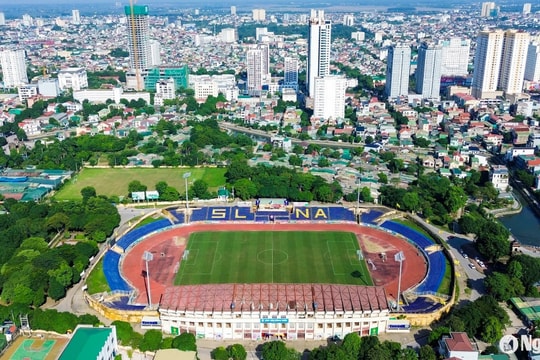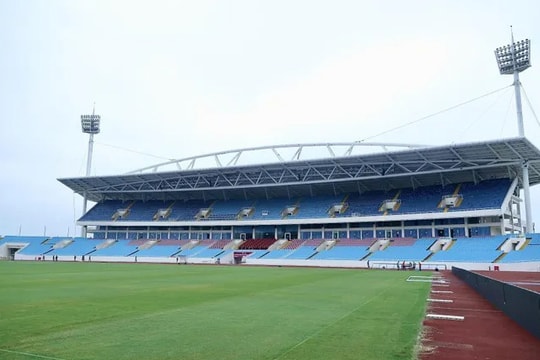The 2018 World Cup organizing committee in Russia built two stands behind the goal to ensure capacity as required by FIFA.
 |
| According to regulations, the minimum capacity of a stadium at the World Cup is 35,000 seats. However, the Ekaterinburg Arena in Yekaterinburg can only serve 27,000 spectators. The 2018 World Cup Organizing Committee chose to install two more stands outside the stadium, behind the two goals, to increase the stadium capacity to 45,000 seats. |
 |
| President Vladimir Putin is personally overseeing the projects, and has said that Russia’s preparations for hosting the world’s number one football tournament for the first time are behind schedule. However, he is still satisfied with the temporary solution of the Ekaterinburg Arena. |
 |
| Instead of having a closed structure under a dome as before, Ekaterinburg Arena now only has a roof on the two main stands. The two newly built stands will allow spectators to sit outdoors. |
 |
| Ekaterinburg Arena front view from the main stand. Two temporary stands will be removed after the 2018 World Cup, returning the stadium, which was built in 1953, to its original space. |
 |
| Ekaterinburg Arena is one of 12 stadiums hosting matches at the 2018 World Cup, and is the smallest of the host venues. It is scheduled to host four group stage matches in Groups A, C, F and H. Meanwhile, the largest capacity stadium, Luzhniki, with over 80,000 seats, will host the opening match and the final. |
 |
| The Ekaterinburg Arena seen from the outside, behind a corner of the newly built stands. The stadium is expected to be renovated by the end of 2017, to serve FIFA inspection tours. Previously, the Estadio Beira-Rio in Porto Alegre, Brazil also had to do the same for the 2014 World Cup. |
According to VNE
[links(













.jpg)
